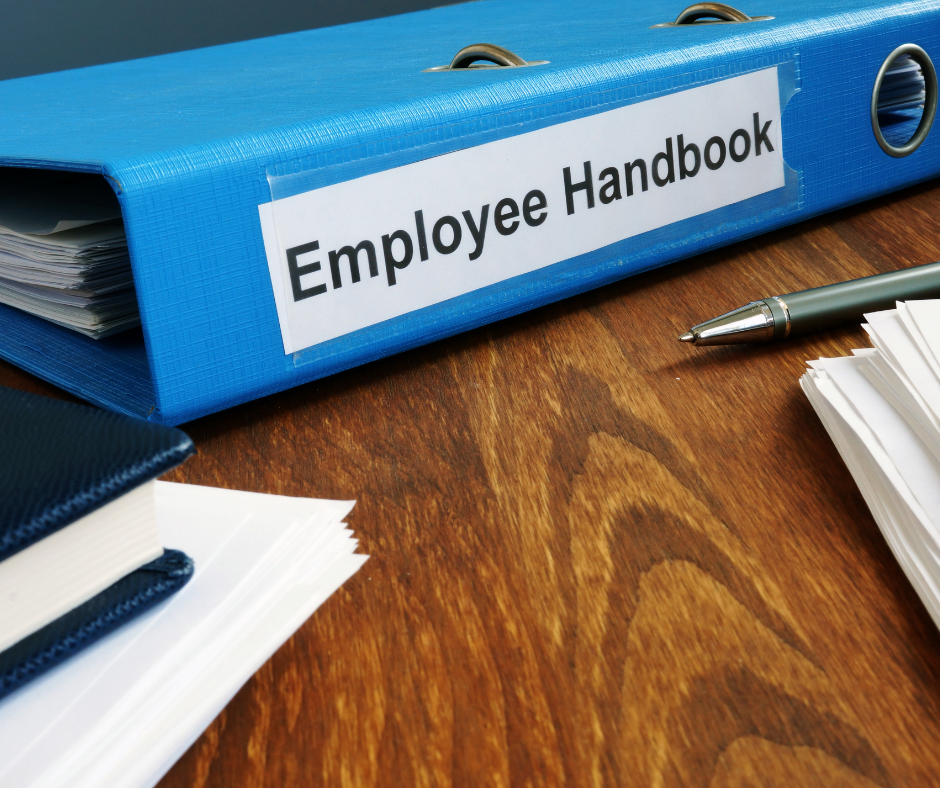
Jack in the Box Employee Handbook serves as a comprehensive guide for employees of Jack in the Box, providing them with important information about the company, its policies, and their rights and responsibilities. This handbook outlines the key aspects that every employee should be aware of to ensure a productive and harmonious work environment.
The handbook begins with an introduction to Jack in the Box, including its company history and values. Understanding the background and core principles of the company helps employees align with its mission and vision.
An important section of the handbook emphasizes the significance of having an employee handbook. It highlights the role of the handbook in providing guidance, clarity, and consistency in company policies and procedures, ensuring that all employees are on the same page.
The benefits and compensation section outlines the various benefits offered by Jack in the Box, including salary and hourly rates, bonus and incentive programs, as well as health and retirement benefits. This ensures that employees are aware of the rewards and perks they are entitled to as part of their employment.
The code of conduct and ethics section details the company’s standards for workplace behavior and expectations. It covers company policies, anti-harassment guidelines, and reinforces the importance of professional conduct to maintain a respectful and inclusive work environment.
Work schedule and time-off policies are addressed to ensure employees have a clear understanding of shift scheduling, availability requirements, and the procedures for taking vacation and paid time off.
Training and development section highlights the importance of continuous learning and skill enhancement. It covers topics such as orientation, onboarding, and opportunities for professional growth within the company.
Health and safety procedures are another crucial aspect covered in the handbook. It addresses safe food handling and hygiene practices, as well as emergency preparedness protocols, prioritizing the well-being and safety of employees and customers.
The handbook also emphasizes employee rights and responsibilities, including equal employment opportunity guidelines, confidentiality agreements, and the protection of intellectual property.
To provide employees with easy access to relevant information, the handbook includes contact information and resources, ensuring that employees know where to seek assistance and support when needed.
By familiarizing themselves with the Jack in the Box Employee Handbook, employees can maintain a positive work environment, understand their rights and responsibilities, and contribute to the success of the company.

Overview of Jack in the Box
Discover the fascinating world of Jack in the Box with a captivating overview. Unravel the rich tapestry of the company’s history and delve into the core values that drive their success. From intriguing beginnings to a commitment to excellence, get ready for an engaging exploration of the culture and principles that have shaped this iconic brand. Prepare to be inspired by the captivating story of Jack in the Box, where history and values intertwine in a truly remarkable manner.
Company History and Values
The company history and values of Jack in the Box are vital for comprehending the brand and its ethos. Established in 1951 by Robert O. Peterson in San Diego, California, Jack in the Box has evolved from a petite drive-thru burger stand into a widely recognized fast-food chain with more than 2,200 locations across the United States.
One fundamental value of Jack in the Box is its unwavering dedication to quality and innovation. Throughout its journey, the company has introduced a plethora of fresh and captivating menu items. Starting from the very first breakfast sandwich to the renowned Jumbo Jack burger, Jack in the Box has persistently responded to the evolving tastes and preferences of its valuable customers.
Alongside delectable food, Jack in the Box highly treasures customer satisfaction. The company places immense emphasis on delivering exceptional service and ensuring a delightful dining experience. This unwavering commitment is evident in their policies and standards, which are upheld by all employees. They strive to embody the company’s values and consistently fulfill the promise of delivering quality and customer satisfaction.
Importance of Employee Handbook
The employee handbook plays a crucial role in ensuring the success of a company. It serves as a guide for employees, promoting clarity, consistency, and fairness in organizational policies. There are several reasons that highlight the importance of the employee handbook.
One of the most significant reasons is legal compliance. The handbook outlines essential legal information, including equal employment opportunity and anti-discrimination policies. By effectively communicating these policies, the handbook helps the company comply with labor laws and protect its employees.
Moreover, the employee handbook sets clear expectations and standards of behavior. It covers various aspects such as attendance, dress code, and conduct. By defining these expectations, the handbook establishes a positive work environment and minimizes misunderstandings among employees.
Consistency is another significant advantage of having an employee handbook. It ensures the fair and consistent application of policies throughout the organization, fostering equality and productivity among employees.
The handbook also serves as a tool for communication. It allows for the sharing of company values, mission, goals, benefits, leave policies, and performance expectations. This enables employees to have a better understanding of the company they work for and their role within it.
Furthermore, the handbook provides a framework for conflict resolution. In case of disputes, it outlines the steps and available resources for resolving conflicts, ensuring a fair process.
Additionally, the best employee handbook informs employees about their rights, such as privacy and a safe working environment. It also highlights their responsibilities and adherence to company policies. By being aware of their rights and responsibilities, employees can contribute to a harmonious work environment.

Benefits and Compensation
Discover the exciting world of benefits and compensation at Jack in the Box! Get ready to explore the enticing realm of salary and hourly rates, uncover the secrets of bonus and incentive programs, and unlock the treasure trove of health and retirement benefits. Join us on a journey where we unveil the perks and rewards that await the dedicated employees of Jack in the Box. From competitive pay to enticing incentives, this section will leave you yearning for your own slice of the Jack in the Box employee experience.
Salary and Hourly Rates
At Jack in the Box, we value fairness in compensation and offer competitive salary and hourly rates to our employees based on their positions and responsibilities. Here is an overview of the approximate salary and hourly rates at Jack in the Box:
Please note that these figures can vary depending on factors such as experience, location, and performance. Additionally, hourly rates may be subject to change according to state minimum wage laws.
At Jack in the Box, we are committed to providing equal employment opportunities and ensuring fairness in compensation. Salaries and hourly rates are determined based on job responsibilities, qualifications, and market standards. We strive to maintain a positive work environment and reward our employees for their valuable contributions.
If you have any questions or concerns regarding salaries and hourly rates, we encourage you to refer to the Employee Handbook or reach out to our Human Resources department for further clarification.
To know about the salary compensations and hourly wage rates of Zaxby’s workers, we suggest reading our Zaxby’s employee handbook for a detailed understanding of the company’s values, policies, and work culture.
Bonus and Incentive Programs
- At Jack in the Box, we proudly offer bonus and incentive programs to reward our hardworking employees.
- Our employees have the opportunity to earn bonuses based on both their individual performance and the overall success of the company.
- These bonuses can take the form of a percentage of their salary or an additional monetary amount.
- Through our incentive programs, we strive to motivate our employees to meet and exceed their goals and targets.
- As part of these programs, we provide enticing rewards such as gift cards and merchandise.
- For those employees who consistently exceed their goals, we offer the opportunity to earn even larger bonuses or rewards.
- Our bonus and incentive programs not only provide financial benefits, but also serve as a driving force for our employees to perform at their best.
- These programs foster healthy competition among our staff and encourage continuous improvement of skills and productivity.
- At Jack in the Box, we understand the importance of cultivating a positive work environment, and our bonus and incentive programs play a significant role in boosting employee morale.
- By offering these programs, we ensure that our employees feel valued and appreciated, ultimately enhancing their job satisfaction and fostering loyalty.
Health and Retirement Benefits
Jack in the Box is dedicated to providing its employees with comprehensive health and retirement benefits. These benefits are designed to ensure the well-being and financial security of our valued team members. We offer a range of key features, including:
- Medical Insurance: Our employees have access to a variety of medical insurance options, which cover preventive care, hospitalization, and prescription medications. This ensures that they receive the necessary medical treatment they require.
- Dental and Vision Insurance: Jack in the Box also provides coverage for dental and vision health, encouraging employees to schedule regular check-ups.
- Retirement Savings Plan: We offer a retirement savings plan that allows employees to contribute a portion of their salary. What’s more, the company provides matching contributions to further support their financial future.
- Life Insurance: Employees at Jack in the Box can take advantage of our life insurance coverage, which offers financial support to their families in the unfortunate event of their passing.
- Disability Insurance: In the event of disability, our employees receive income replacement to help them meet their financial obligations.
- Employee Assistance Program: We understand that personal and work-related challenges can arise, which is why we offer an employee assistance program. This confidential counseling and support service can help our employees navigate these difficulties.
These health and retirement benefits demonstrate Jack in the Box’s steadfast commitment to the well-being and financial security of our dedicated employees.

Code of Conduct and Ethics
With a commitment to maintaining a positive work environment, the Code of Conduct and Ethics section sets the tone for Jack in the Box employees. Explore the policies and expectations that guide their professional conduct, alongside the emphasis on workplace behavior and the importance of anti-harassment policies. Get ready to dive into the principles that shape the employee experience, ensuring a safe and respectful workplace for all.
Company Policies and Expectations
Employees must be aware of and adhere to company policies and expectations. Here are some key aspects:
- Attendance: Arrive on time for scheduled shifts and notify supervisor in advance of absences or lateness.
- Dress code: Follow established dress code for specific role.
- Professionalism: Maintain a professional demeanor, treat colleagues and customers with respect, and refrain from discrimination or harassment.
- Confidentiality: Uphol confidentiality of sensitive information, including customer data and trade secrets.
- Use of company resources: Use company resources for work purposes only.
- Social media usage: Be mindful of online presence and avoid posting anything that reflects negatively on the company.
- Compliance with laws and regulations: Comply with all applicable laws, regulations, and company policies.
- Conflict resolution: Follow established channels for reporting and resolving conflicts or issues.
- Continuous improvement: Seek professional growth opportunities and contribute to overall company improvement.
- Health and safety: Prioritize safety, follow safety guidelines, and report hazards or incidents promptly.
By understanding and adhering to these company policies and expectations, employees contribute to a positive work environment and ensure organizational success.
Workplace Behavior and Anti-Harassment Policies
Workplace Behavior and Anti-Harassment Policies play a crucial role in fostering a secure and all-inclusive environment. By adhering to these policies, we ensure that our workplace remains respectful and professional.
Our behavior policy sets clear expectations and emphasizes the importance of treating all colleagues with respect, regardless of factors like race, gender, religion, or sexual orientation. This policy strictly prohibits any form of discrimination, harassment, or bullying.
Furthermore, our anti-harassment policies aim to prevent and address incidents promptly. They outline procedures for reporting, maintaining confidentiality, and providing support.
It is imperative for all employees to familiarize themselves with these policies and consistently uphold them. Failure to comply with these policies may result in disciplinary action, including termination.
By embracing these policies, we foster a positive work environment where everyone feels valued and respected.
Work Schedule and Time Off
Planning your work schedule and managing time off effectively is crucial for a balanced work-life routine. In this section, we’ll dive into two key aspects: shift scheduling and availability, and vacation and paid time off policies. Discover how these factors impact your work experience, explore tips for optimizing your schedule, and learn about the policies that ensure you have a fair and enjoyable time off when you need it. Let’s embark on this journey of work-life harmony!
Shift Scheduling and Availability
When it comes to shift scheduling and availability, Jack in the Box prioritizes clear and organized schedules for employees. Here are the key points to consider:
- Flexible scheduling: Jack in the Box understands the importance of employee availability and accommodates it by creating schedules based on the provided availability.
- Shift rotations: To distribute the workload effectively and prevent burdening employees with undesirable shifts, Jack in the Box implements shift rotations.
- Advance notice: Employees at Jack in the Box receive advance notice of their schedules, allowing them to plan accordingly and make necessary arrangements.
- Open communication: In the event of scheduling conflicts, employees have the opportunity to communicate with their managers to find suitable solutions.
- Availability updates: Jack in the Box encourages employees to regularly update their availability, ensuring that scheduling remains accurate and up-to-date.
Vacation and Paid Time Off Policies
Employees at Jack in the Box enjoy various benefits and options for taking time off.
- Employees receive paid vacation based on their length of service. The amount of vacation time increases with each year of employment, reaching the maximum after a certain number of years.
- Paid time off: In addition to vacation time, employees have access to paid time off for personal reasons, such as illness or appointments. The amount of paid time off granted may vary based on position and length of service.
- Holidays: Jack in the Box provides paid time off for designated holidays throughout the year.
- Scheduling flexibility: Jack in the Box accommodates employees’ scheduling needs whenever possible. Employees are encouraged to communicate their time off requests in advance.
- Unused time off: Employees are encouraged to use their vacation and paid time off. However, if there is unused time off at the end of the year, options for carrying over a portion of the time or receiving compensation may be available.
Employees should review the specific Vacation and Paid Time Off Policies in the Jack in the Box Employee Handbook for complete details.
To make the most of their time off, employees should plan ahead, communicate with supervisors, and utilize company resources. Taking time off contributes to overall well-being and job satisfaction.
If you want to know about the vacation and paid time off policies of Hello Fresh, read our complete Hello Fresh employee handbook.
Training and Development
Join us on a journey exploring the world of training and development at Jack in the Box. Discover how we equip our employees for success through two essential pillars: orientation and onboarding, and continuing education and skill enhancement. From the moment our team members step foot into our dynamic environment, to the ongoing opportunities for growth and learning, we strive to provide a comprehensive and supportive development experience. Get ready to uncover the tools and resources that make Jack in the Box a vibrant hub of professional growth.
Orientation and Onboarding
Orientation and onboarding are essential for new employees at Jack in the Box. Here are key considerations:
- Introduction: During orientation, new employees are introduced to the company’s history, values, and mission. This helps them understand the culture and their role within the organization.
- Policies and expectations: Detailed information regarding the company’s code of conduct, dress code, and attendance requirements is provided during onboarding. This ensures that new employees have a clear understanding and contributes towards maintaining a positive work environment.
- Training programs: The orientation process includes on-the-job training, e-learning modules, or workshops. These help equip new employees with the necessary skills and knowledge required for their roles.
- Introduction to team members: During onboarding, new employees are introduced to their team, supervisors, and other members of the organization. This helps in building relationships and fostering a sense of belonging.
- Company resources: New employees receive information about employee benefits, assistance programs, and HR contact details. This is done to provide necessary support to the new employees.
To further enhance the orientation and onboarding process, Jack in the Box can consider the following suggestions:
- Assigning a mentor to help new employees navigate and provide guidance throughout their onboarding process.
- Providing comprehensive training materials, such as manuals and videos, to ensure easy access to information.
- Implementing regular check-ins and performance evaluations to track the progress of new employees and identify areas for improvement.
- Organizing team-building activities or social events to facilitate connections and alleviate the feeling of isolation among new employees.
- Offering ongoing support and development opportunities for long-term growth and job satisfaction.
Continuing Education and Skill Enhancement
Continuing Education and Skill Enhancement are fundamental for personal and professional growth. At Jack in the Box, we recognize the significance of providing opportunities for employees to develop their knowledge and skills.
At Jack in the Box, we offer Continuing Education through various programs and initiatives. These programs aim to enhance employees’ proficiency and foster a culture of learning. Our company provides training sessions and workshops that cover a wide range of topics, including customer service, food safety, and leadership skills.
We strongly encourage employees to actively participate in these programs as they not only contribute to their well-being but also enhance their proficiency. Continuing Education helps employees stay up-to-date with industry trends, acquire new skills, and ultimately improve their performance.
To further support Skill Enhancement, we offer employees opportunities to take on additional responsibilities and cross-train in different areas. This allows them to diversify their skill set and gain a comprehensive understanding of our organization’s operations.
Through these initiatives, Jack in the Box empowers employees to reach their full potential and excel in their careers. By investing in their development, we ensure a highly skilled and motivated workforce that significantly contributes to our overall success.
Pro-tip: Make the most of the Continuing Education and Skill Enhancement programs offered by Jack in the Box. Embrace the opportunity to learn and grow in your role, as it will have personal benefits and contribute to your professional success within the company.
Health and Safety Procedures
In the Health and Safety Procedures section, we will dive into two vital aspects: Safe Food Handling and Hygiene, and Emergency Preparedness. Get ready to uncover essential practices that ensure the well-being of both employees and customers. We’ll explore the importance of proper food handling and maintaining a hygienic environment to prevent contamination. Additionally, we’ll examine the measures in place for emergency situations, ensuring everyone’s safety and preparedness. Stay tuned for valuable insights and tips to promote a secure and healthy work environment.
Safe Food Handling and Hygiene
Safe food handling and hygiene are of utmost importance to maintain the quality and safety of the food served at Jack in the Box. Ensuring food safety involves several key practices.
First and foremost, proper handwashing is crucial. All employees must wash their hands thoroughly using soap and warm water for at least 20 seconds before and after handling food, as well as after using the restroom or dealing with raw ingredients.
Preventing cross-contamination is also essential. It is important to store raw and cooked foods separately and to clean and sanitize utensils, cutting boards, and surfaces after each use.
Maintaining the correct temperatures during storage and cooking is vital in preventing bacterial growth. Hot foods must be kept above 140°F (60°C), while cold foods should be stored below 41°F (5°C).
Proper food storage is an essential aspect of food safety. Perishable items like meat, dairy products, and prepared dishes should be stored in refrigerators to maintain freshness and prevent spoilage.
Regular cleaning and sanitization of all food preparation equipment, including grills, fryers, and cutting tools, is necessary to remove any food residue and prevent the growth of harmful bacteria.
Employee health and hygiene practices play a significant role in maintaining food safety. Employees should follow strict personal hygiene measures such as tying back their hair, wearing clean uniforms, and covering any open wounds or cuts.
Proper waste management is also crucial. Food waste and refuse should be disposed of regularly in designated containers to prevent pest infestations and to ensure cleanliness.
By strictly adhering to these safe food handling and hygiene practices, Jack in the Box prioritizes the health and well-being of its customers and maintains the highest standards of food safety.
Emergency Preparedness
During emergencies, employees must be prepared and aware of the necessary actions. The Jack in the Box Employee Handbook emphasizes the importance of emergency preparedness for employee safety and well-being.
1. Emergency evacuation procedures: The handbook provides clear instructions on evacuating the premises in an emergency. It outlines designated routes and assembly points for a swift and organized evacuation.
2. Emergency contact information: The handbook includes relevant emergency contact numbers, such as the fire department, police department, and medical services. This ensures employees have easy access to necessary information during emergencies.
3. Emergency communication: The handbook explains communication protocols during emergencies. This includes using alarms, announcements, or other means to alert employees and provide crucial information.
4. First aid guidelines: The handbook outlines basic first aid procedures employees should know. It includes information on responding to common emergencies, such as injuries, burns, or choking incidents, so employees can provide immediate assistance if needed.
5. Training and drills: The handbook highlights the importance of regular emergency preparedness training and drills. It emphasizes employee participation to familiarize themselves with emergency procedures and ensure a prompt response during actual emergencies.
By incorporating these guidelines, the Jack in the Box Employee Handbook ensures all employees are well-prepared to handle emergency situations effectively, promoting a safe and secure working environment.

Employee Rights and Responsibilities
Discover the essential areas of employee rights and responsibilities in the Jack in the Box employee handbook. From equal employment opportunity to confidentiality and intellectual property, this section sheds light on the rights every employee deserves and the responsibilities they must fulfill. Get ready to dive into a wealth of information that will empower you to navigate the workplace with confidence and understanding.
Equal Employment Opportunity
Equal Employment Opportunity is vital at Jack in the Box. The company is committed to providing equal opportunities for all employees, regardless of their race, gender, age, religion, disability, or any other protected characteristic.
At Jack in the Box, hiring decisions, promotions, and career advancements are based on merit, qualifications, and performance. There is a clear policy against discrimination or harassment, including discriminatory behavior, offensive language, and inappropriate jokes.
Employees are encouraged to report any instances of discrimination or harassment to their supervisor or the Human Resources department. All complaints will be thoroughly investigated, and appropriate actions will be taken to address the situation and prevent further occurrences.
Through the Equal Employment Opportunity policy, Jack in the Box aims to foster a diverse and inclusive work environment where everyone feels respected and valued. The company recognizes the importance of diversity in enhancing creativity, innovation, and overall team performance.
Pro-tip: To promote equal employment opportunity, it is essential for employees to be familiar with the company’s policies and procedures. Take the time to familiarize yourself with Jack in the Box’s Equal Employment Opportunity policy and educate others about it. This will contribute to creating a more inclusive and harmonious workplace.
Confidentiality and Intellectual Property
Confidentiality and intellectual property are crucial in the workplace. Employees must understand and respect these aspects.
- Maintaining Confidentiality: It is essential for employees to uphold the confidentiality of sensitive information encountered during their work. This includes customer data, trade secrets, financial information, and proprietary information. Breaching confidentiality could have severe legal consequences and harm the company’s reputation.
- Respecting Intellectual Property: Employees should show respect towards the company’s intellectual property, including trademarks, copyrights, and patents. They must refrain from using or sharing intellectual property without proper authorization. This ensures the protection of the company’s innovations and creations.
- Non-disclosure Agreements: Employees may be required to sign non-disclosure agreements (NDAs) to safeguard confidential information. By signing an NDA, employees commit to maintaining the confidentiality of sensitive information, even after their employment ends.
- Proper Handling of Company Property: Employees should handle company equipment, software, and resources with care and responsibility. Unauthorized use or misuse of these resources may result in disciplinary actions.
Respecting confidentiality and intellectual property benefits both the company and its employees. It promotes a culture of trust, encourages innovation, and safeguards valuable assets.
Fact: According to a survey conducted by the Ponemon Institute, the average cost of a data breach in 2020 was $3.86 million. Protecting confidentiality and intellectual property is crucial for businesses to avoid financial and reputational damages.
Contact Information and Resources
When it comes to contact information and resources, the Jack in the Box Employee Handbook provides employees with the necessary tools to navigate their employment successfully. Here are the key points to consider:
– Employee hotline: Jack in the Box provides an employee hotline at [phone number]. The hotline is available for employees to report concerns, ask questions, or seek guidance regarding their employment.
– Human Resources: Employees can visit the Human Resources department located at [address] for any HR-related inquiries or assistance. The HR team is available to provide support and handle employment-related matters.
– Online resources: The employee handbook includes information on accessing important online resources such as the company’s intranet. Employees can find forms, policies, and other relevant documents.
– Training and development: The employee handbook highlights various training and development programs aimed at enhancing skills and supporting career progression.
– Additional support: If employees require further assistance or have specific questions not covered in the handbook, they can reach out to their immediate supervisor or manager for guidance and support.
Remember, utilizing the right contact information and resources can contribute to a successful experience at Jack in the Box. Take advantage of these resources for personal growth and development.
– Team Member: $9.50 – $11.00 per hour- Shift Supervisor: $12.00 – $14.00 per hour- Assistant Manager: $16.00 – $18.00 per hour- Restaurant Manager: $45,000 – $55,000 per year- General Manager: $50,000 – $70,000 per year
Frequently Asked Questions
1. What are the working hours for employees at Jack in the Box restaurants?
The employees at Jack in the Box restaurants must comply with applicable laws regarding working hours. The maximum working hours per day are 12, and employees are entitled to at least one day off in every seven-day period.
2. Where can I find the table of contents for the Jack in the Box employee handbook?
The table of contents for the Jack in the Box employee handbook can be found in the handbook itself. You can access the full handbook by uploading your study documents or becoming a member on the platform mentioned in the reference data.
3. Does the Jack in the Box employee handbook provide information about the company’s business hours?
Yes, the Jack in the Box employee handbook provides information about the company’s business hours. It covers policies regarding work schedules and attendance, which include details about business hours.
4. What is the brand promise mentioned in the Jack in the Box employee handbook?
The Jack in the Box employee handbook mentions the brand promise of the company. The specific details of the brand promise can be found in the welcome letter or introduction section of the handbook.
5. Is at-will employment mentioned in the Jack in the Box employee handbook?
Yes, the Jack in the Box employee handbook states that employment with DMSD Foods, Inc. (a Jack in the Box franchisee) is at-will. This means that either the employee or the company can terminate the employment relationship at any time.
6. Are working conditions addressed in the Jack in the Box employee handbook?
Yes, the Jack in the Box employee handbook emphasizes the company’s commitment to high ethical and moral standards, including expectations regarding working conditions. It states that vendors must provide a safe and healthy workplace for their workers.
Important Disclaimer:
The article presented here does not serve as a representation of the company’s actual employee handbook mentioned in this article.
Our discussions and insights regarding employee handbook are based on assumptions about what may be considered significant in this companies’ policies. These assumptions are drawn from available information and industry knowledge. Readers are advised that the content provided is for informational purposes only and should not be construed as an exact reflection of any company’s official policies or procedures. For precise and accurate details regarding a company’s employee handbook, individuals should refer directly to the company’s official documentation or consult with appropriate representatives.
Please be aware that the content on this page has been generated by using artificial intelligence language models and may contain errors, inconsistencies, or outdated information. It is provided as-is without any warranties or guarantees of accuracy. We strongly recommend using this content as a starting point for further research. We disclaim any liability for damages or losses resulting from the use or reliance on this content.